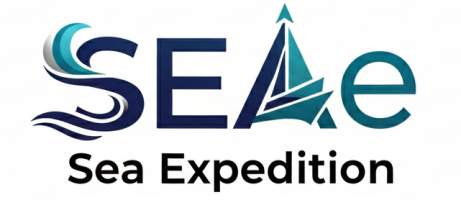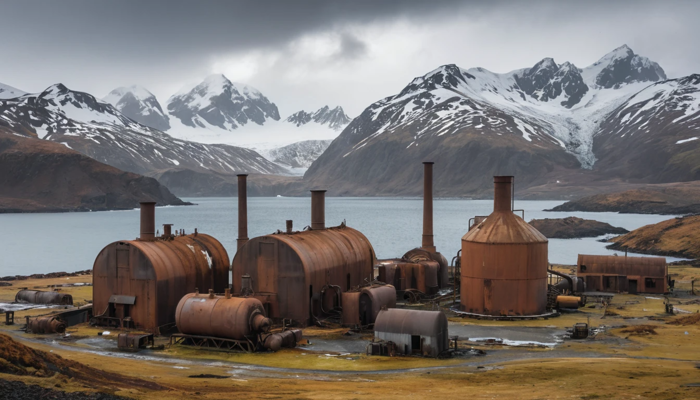History Of Whaling Stations South Georgia traces Grytviken, Leith Harbour, Husvik and the rise, fall, and recovery of the island’s whaling era.
South Georgia’s whaling stations began in the early 1900s. Norwegian and British firms built major shore factories at Grytviken, Leith Harbour, and Husvik. They processed whales until the 1960s. Today, these sites stand as haunting ruins and reminders of human impact on nature.
History Of Whaling Stations South Georgia
What Happened To Those Rusting Boilers On South Georgia, And Why Do They Still Matter?
South Georgia’s whaling stations began as booming industrial hubs. They processed whales for oil and fertilizer. Overhunting and new technology caused a sharp decline. The stations closed, leaving ruins and a complex legacy.
Early Whaling On South Georgia 🐋
The first hunters to reach South Georgia weren’t whalers but fur sealers. In the early 1800s, seal skins were highly valuable, and ships flocked to the island.
But soon, attention shifted. Whales swam in abundance near the island, and with demand for oil growing, companies realized South Georgia was the perfect spot to build shore stations.
Carl Anton Larsen And Grytviken 🚢
In 1904, Carl Anton Larsen, a Norwegian entrepreneur, established the first true whaling station at Grytviken.
- It had boilers, winches, and a sheltered harbor.
- Workers lived in wooden homes, forming a small community.
- Grytviken quickly became the center of South Georgia’s whaling industry.
This site shaped the future of all whaling stations on the island and stood as the most iconic for decades.
Growth Of Shore-Based Whaling 🏭
As word spread of Grytviken’s success, more stations opened. By the 1910s, South Georgia was filled with factories along sheltered bays.
Why shore stations worked so well:
- Sheltered bays for docking catcher boats.
- Land-based boilers and slips made processing efficient.
- Housing for workers created semi-permanent communities.
South Georgia soon became the beating heart of Southern Ocean whaling.
Key Stations: Grytviken, Leith, Husvik 📍
At its peak, the island had seven main whaling stations:
- Grytviken
- Leith Harbour
- Husvik
- Stromness
- Prince Olav Harbour
- Ocean Harbour
- Godthul (smaller site)
Each station was like a mini-town, complete with housing, workshops, and even cinemas for entertainment.
Life At The Stations 🧰
Daily life was tough, but workers found ways to cope.
Work life included:
- Long shifts in freezing winds.
- Dangerous jobs flensing whales with sharp tools.
- Boiling blubber in hot, greasy conditions.
Off-duty life included:
- Watching movies in makeshift cinemas.
- Playing cards and telling stories.
- Visiting bakeries and small shops.
| Station | Opened | Closed | Notes |
| Grytviken | 1904 | 1964 | First station, founded by Larsen |
| Leith Harbour | 1909 | 1965 | Largest station on the island |
| Husvik | 1910 | 1960 | Began as a floating station |
Whaling Technology And Factory Ships ⚙️
At first, whaling relied on steam-powered catcher boats and shore-based boilers. But soon, explosive harpoons and fast vessels increased catches dramatically.
Then came factory ships—floating factories that could process whales at sea. This meant ships no longer needed to return to shore every day. While efficient, it also caused even greater overhunting.
The Role Of World Wars 🪖
World War I and II interrupted operations.
- Men were drafted, and some ships were used for war service.
- Demand for whale oil dropped in certain markets.
- After each war, stations tried to bounce back but never fully regained momentum.
Environmental Impact And Overhunting 🌊
The toll on whale populations was staggering.
- Blue whales and right whales nearly vanished.
- Humpbacks and fin whales were hunted in massive numbers.
- Ecosystems were thrown off balance, affecting seals, fish, and birds.
By the 1950s, it was clear the industry had overreached.
Decline And Closure Of Stations 🕰️
Several factors brought the end of South Georgia’s whaling era:
- Whale stocks collapsed.
- Cheaper substitutes replaced whale oil.
- Factory ships outcompeted shore stations.
By the mid-1960s, Leith Harbour and Grytviken closed, marking the end of a brutal yet historic chapter.
The Shackleton Connection ⛏️
South Georgia isn’t just about whaling—it’s tied to polar explorer Ernest Shackleton. He died on the island in 1922 and was buried at Grytviken. His grave is still visited by explorers and tourists today.
This connection makes Grytviken a unique mix of exploration and whaling history.
Shipwrecks And Ruins On The Shore ⚓
Walk along South Georgia’s coast today, and you’ll see:
- Rusted boilers
- Abandoned catcher boats
- Crumbling wooden homes
- Skeletons of entire factories
Some wrecks are preserved for history, while others are removed for safety. The eerie ruins tell the story better than any book.
| Ship/Wreck | Location | Condition | Note |
| Petrel | Grytviken | Rusting hull | Iconic whale catcher |
| Boiler Remains | Leith Harbour | Corroded | Historic artifact |
| Factory Ruins | Husvik | Collapsed | Hazardous to explore |
Wildlife Recovery And Conservation 🌱
Once whaling stopped, nature began to heal.
- Penguins reclaimed beaches.
- Seals grew in numbers.
- Whales are slowly returning to South Georgia waters.
Conservation projects continue to protect these fragile ecosystems, offering hope for full recovery.
South Georgia Heritage Trust And Museums 🏛️
The South Georgia Museum at Grytviken keeps history alive. It displays old tools, harpoons, and photos of whalers. Volunteers also work to clean up oil tanks and dangerous ruins.
The goal: preserve history while letting wildlife thrive again.
Modern Visits And Responsible Tourism 🚶♂️
Today, South Georgia welcomes small groups of tourists. Cruises bring visitors to see:
- Shackleton’s grave
- Penguin colonies
- Rusted whaling ruins
Strict rules limit where tourists can go. Biosecurity checks prevent invasive species. Tourism funds conservation and education.
Lessons From South Georgia’s Whaling Past 📚
The island teaches us key lessons:
- Industrial greed can wipe out resources quickly.
- Technology can accelerate destruction if not managed.
- Nature, if given time, can bounce back.
South Georgia’s story is both a warning and a hope for global conservation.
| Year | Event |
| 1904 | Grytviken founded |
| 1910s–1930s | Peak whaling years |
| 1960s | Stations closed |
| 2000s | Conservation efforts increased |
Legacy And Ongoing Research 🔬
Today, scientists and archaeologists study South Georgia:
- Tracking whale recovery with surveys.
- Documenting ruins and old ships.
- Studying how ecosystems rebuild after human impact.
The island remains a living classroom for history, science, and nature.
Grytviken Whaling Station History Carl Anton Larsen 1904 🛠️
In 1904, Carl Anton Larsen, a Norwegian entrepreneur, founded the Grytviken whaling station. It was the first permanent shore-based station in South Georgia and quickly became a model for others. Larsen brought modern equipment, skilled workers, and even his family, turning Grytviken into a bustling industrial and social hub.
At its peak, Grytviken processed thousands of whales, producing oil for lamps, soap, and margarine. Workers lived in small wooden houses, and the community included shops and a church. Grytviken wasn’t just an industrial site—it was a village at the edge of the world.
Leith Harbour Whaling Station South Georgia History 1909 ⚓
Five years after Grytviken, Leith Harbour whaling station opened in 1909. It was built by Christian Salvesen & Co. and soon became the largest station in South Georgia. The site included extensive factories, housing, and workshops, resembling a small industrial town.
Life at Leith Harbour was tough but organized. Crews worked long hours processing whales on flensing platforms and inside massive boilers. Off duty, men watched films, played football, and enjoyed limited comforts brought from home. By the 1950s, Leith Harbour was the main center of whaling on the island.
Husvik Whaling Station South Georgia History 🐋
The Husvik whaling station began operations around 1910. Unlike Grytviken and Leith Harbour, Husvik started as a floating factory before being established onshore. Though smaller, it played an important role in the industry.
Husvik ran on and off for decades but eventually declined as larger stations outcompeted it. By the early 1960s, it was abandoned. Today, its remains—boilers, rusting ships, and crumbling huts—stand as haunting reminders of South Georgia’s whaling boom.
South Georgia Whaling Stations Closure 1960s 1964 1965 ⏳
By the 1960s, the whaling industry had collapsed. Overhunting left whale stocks dangerously low, and alternatives to whale oil reduced demand. One by one, stations shut down.
- Grytviken closed in 1964.
- Leith Harbour followed in 1965, marking the end of large-scale whaling on South Georgia.
- Other stations, like Husvik, Stromness, and Prince Olav Harbour, had closed even earlier.
These closures ended over 50 years of intensive whaling. What was once the busiest hub of whale processing in the South Atlantic became a ghostly collection of rusting factories.
Shackleton Grave Grytviken South Georgia 1922 ⚰️
South Georgia is not only remembered for its whaling history—it also holds a connection to Sir Ernest Shackleton. The legendary Antarctic explorer died of a heart attack in 1922 while preparing for another expedition. His crew buried him at Grytviken cemetery, overlooking the bay.
Today, Shackleton’s grave is one of the most visited sites on the island. Tourists and explorers alike raise a glass in his honor, standing among the whaling ruins and snowy peaks. His resting place ties South Georgia’s whaling era to the golden age of polar exploration.
Conclusion: Key Takeaways ✨
South Georgia’s whaling stations rose quickly and fell just as fast. They left behind rusting ruins, ecological scars, and human stories.
Yet, the island’s wildlife is recovering. Penguins, seals, and whales are returning, reminding us of nature’s resilience. Today, South Georgia stands as a place of memory, recovery, and inspiration.
Frequently Asked Questions
When Did Grytviken Start Whaling?
Grytviken began operations in 1904. It was the first permanent whaling station on the island.
When Did Leith Harbour Close?
Leith Harbour shut down in 1965. It was the largest and one of the last to close.
How Long Did Husvik Operate?
Husvik operated from 1910 until about 1960. It began as a floating station before moving ashore.
Are Whales Returning To South Georgia?
Yes, whales are slowly returning. Humpbacks and fin whales are seen more often today.
Can Visitors See The Whaling Ruins?
Yes, visitors can tour ruins on guided trips. Strict rules protect both history and wildlife.


Leave a Reply